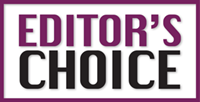
Sitting next to a teenager on a train with their iPod turned up loud enough for the entire carriage to hear is annoying, most will agree. Perhaps I might educate them about the risks of ‘music’ (if you can call it that) related hearing loss and quote this systematic review. This is a difficult topic to research and studies are constrained by the difficulty in exposing subjects to loud sounds for very long periods of time and also the definitions of what constitutes hearing loss and the different outcome measures. The current US safety standards for noise were based on the assumption of 40 years of exposure to occupational noise. Noise is defined (in the USA) as sound exceeding the level of 80 decibels, and exposure of at least 40 hours per week is considered potentially harmful. This paper highlights that this is too conservative. The analysis included 33 papers. Pooled results (adults and the young with varying noise exposures) showed that temporary tinnitus was experienced by most subjects and permanent tinnitus only by up to 2%. Short bursts of loud music often didn’t change the PTA, but acoustic emissions were decreased, lending evidence to early damage that isn’t necessarily picked up and is sub-clinical. Today’s generation are at a greater risk of hearing loss than we were, with the greater prevalence of personal music system use, and at a much younger age. Forty years of increased noise exposure is easy to accumulate when starting at primary school.




